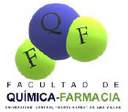Executive Secretary

7th International Symposium of Pharmaceutical Sciences
VII SICF
Abstract
Seaweed is a promising source of compounds with antioxidant activity. The polysaccharides could have a contribution to it medicinal value, important in the food industry. It is known that the antioxidant activity of Bryothamnion triquetrum (Bt) and Halimeda opuntia (Ho) are relationship with the presence of phenolic compounds. Therefore, the objective of this work is to characterize and evaluate the in vitro antioxidant activity of fractions rich in polysaccharides of both marine algae. For this, the analysis of monosaccharides by HPLC of the total polysaccharide mixture extracted from seaweeds showed the presence of N-acetylglucosamine (GlcNAc), N-acetylgalactosamine (GalNAc), galactose (Gal), mannose (Man), glucose (Glc), xylose (Xyl) and fucose (Fuc) but others three signals in the chromatogram could not be identified from the standard monosaccharides. The relative abundance with respect to the total monosaccharides of Gal, Man and Glc in Hop correspond to 26.5, 14.1 and 18.7%, respectively and is higher than these monosaccharides in Bt. However, the relative abundance of GlcNAc (21.9%), GalNAc (9.1%) and Xyl (8.2%) was superior in Bt. The antioxidant activity was evaluated by the DPPH method, obtaining values of IC 50 = 3.125 and 9.595 ug of eqv. of Gal for Bt and Ho respectively. These results are the first evidence of differences in polysaccharide content and / or abundance in these two species of algae. In addition, we demonstrated that non identified structures correspond to sulphated monosaccharides using a chemical desulphation treatment and the polysaccharides of both contribute to their antioxidant activity.
Resumen
Seaweed is a promising source of compounds with antioxidant activity. The polysaccharides could have a contribution to it medicinal value, important in the food industry. It is known that the antioxidant activity of Bryothamnion triquetrum (Bt) and Halimeda opuntia (Ho) are relationship with the presence of phenolic compounds. Therefore, the objective of this work is to characterize and evaluate the in vitro antioxidant activity of fractions rich in polysaccharides of both marine algae. For this, the analysis of monosaccharides by HPLC of the total polysaccharide mixture extracted from seaweeds showed the presence of N-acetylglucosamine (GlcNAc), N-acetylgalactosamine (GalNAc), galactose (Gal), mannose (Man), glucose (Glc), xylose (Xyl) and fucose (Fuc) but others three signals in the chromatogram could not be identified from the standard monosaccharides. The relative abundance with respect to the total monosaccharides of Gal, Man and Glc in Hop correspond to 26.5, 14.1 and 18.7%, respectively and is higher than these monosaccharides in Bt. However, the relative abundance of GlcNAc (21.9%), GalNAc (9.1%) and Xyl (8.2%) was superior in Bt. The antioxidant activity was evaluated by the DPPH method, obtaining values of IC 50 = 3.125 and 9.595 ug of eqv. of Gal for Bt and Ho respectively. These results are the first evidence of differences in polysaccharide content and / or abundance in these two species of algae. In addition, we demonstrated that non identified structures correspond to sulphated monosaccharides using a chemical desulphation treatment and the polysaccharides of both contribute to their antioxidant activity.
About The Speaker

MsC. Daylín Díaz Gutierrez






